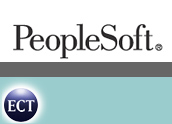
Oracle has released PeopleSoft Enterprise Performance Management (EPM) 9, an integrated suite of analytic applications that is part of Oracle’s PeopleSoft Enterprise 9 suite. New features include expanded enterprise planning and compliance management capabilities and new industry functionality in the higher education vertical.
Targeted at the JD Edwards and PeopleSoft installed bases, the application is also notable in that it isone of the first Oracle products to use Fusion analytics — Fusion being Oracle’s integration strategyfor its various acquisitions — as a baseline for the data model, Chris Leone, group vice president ofapplications strategy at Oracle, told CRM Buyer. “Oracle will continue to augment this analytic datamodel as we migrate to Fusion,” he said. This particular suite already supports multiple productsfrom JD Edwards and PeopleSoft, he added.
Tighter Integration
Tighter integration linkages among the various applications in the EPM suite — which in some caseshas yielded additional applications or value-add functionality — is a key feature of the upgrades,Leone said.
PeopleSoft Planning and Budgeting, for instance, now integrates with PeopleSoft Workforce Rewards and PeopleSoft Human Capital Management. As a result, the application is now able to offer compensation planning. This new application supports the modeling of different compensation scenarios and “what if” analysis of compensation requirements. A user can access data from either or both Workforce Rewards and Human Capital Management as they experiment with these scenarios.
PeopleSoft EPM 9 also deepens the integration between PeopleSoft Global Consolidations, another application in EPM that consolidates financial data from disparate sources, and PeopleSoft Internal Controls Enforcer.
New control diagnostics for setup, segregation of duties and security access in Global Consolidations 9can monitor the controls inherent in organizations’ financial control and reporting operations, thecompany explained.
Other Changes, New Vertical Expertise
The application also offers new balance sheet planning features for direct and indirect cash flow analysis modeling. Expanded compliance capabilities give users more detailed tools in the reporting and financial control processes. A new feature in Enterprise Global Consolidations provides parent companies with an analysis of ownership and control rules of its subsidiaries, and gives users the ability to drill down to the related ownership rules.
Finally, this version of EPM 9 offers vertical functionality in the higher education space, includinga new Campus Solutions Warehouse and associated data marts. The warehouse app captures student-related information, and combines it with analysis of recruiting, admissions, student records and student financials data. Institutions can then use this data to maximize student-recruiting efforts and improve retention.
California State University said it is going to deploy the data warehouse. “The pre-release design we’ve seen appears to provide a significant value proposition to the university,” said CMS Data Warehouse Project Director Donna Furon.






















































